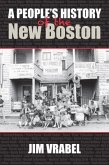Between 1950 and 1970, an unusual alliance of government and business interacting with neighborhood groups created impressive physical revitalization in Boston. A city characterized at the end of World War II by a rich history, an undistinguished skyline, urban decay, and no discernible plan for its future, Boston by the end of the 1970s featured a striking silhouette of old and new buildings symbolizing changes that transformed the city into one of America's five most vital and attractive urban centers. But the rejuvenation also produced unintended, frequently contradictory, and sometimes tragic consequences. The multicultural West End was destroyed and many of its residents were displaced. The attraction of new capital, new business, and tourists to the revitalized city wrought damaging social and economic vibrations that continue to this day. This book provides the first comprehensive political history of Boston's renewal and its aftermath. It is a tale principally of the determination of two mayors, John B. Hynes and John F. Collins, and those inside government and the business community who worked with them. It is also the story of community resistance, particularly in the immigrant West End and the predominantly black South End, by those who perceived the original plans as harmful to their communities.
Hinweis: Dieser Artikel kann nur an eine deutsche Lieferadresse ausgeliefert werden.
Hinweis: Dieser Artikel kann nur an eine deutsche Lieferadresse ausgeliefert werden.








